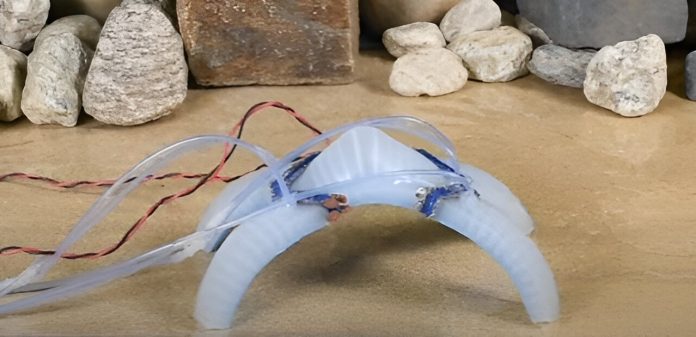
In a groundbreaking development, Yale roboticists have created a robot that can survive by self-amputation, much like lizards and crabs.
This innovative technology allows robots to disconnect their limbs to escape from dangerous situations or obstacles, ensuring their survival and continued functionality.
The research, led by Prof. Rebecca Kramer-Bottiglio, is detailed in the journal Advanced Materials.
In nature, many animals, such as lizards and crabs, use self-amputation as a survival tactic. For instance, a lizard can shed its tail to escape a predator, while a crab might lose a claw to free itself from a tight spot.
Inspired by these natural survival strategies, Yale researchers have developed a similar capability for robots.
The key to this self-amputation ability lies in a newly invented material called a bicontinuous thermoplastic elastomer.
This material is a rubbery solid at room temperature but melts into a liquid when heated to about 284°F. It is embedded in a foam-like silicone structure that holds the molten thermoplastic in place.
Here’s how it works:
- Connection: Two silicone-bodied robots, each with a layer of the thermoplastic elastomer, are brought together. The foams are heated, causing the thermoplastic to melt and form a liquid. The silicone structure holds the molten material, preventing it from spilling out.
- Bonding: When the two parts meet, the molten material combines into a continuous liquid mass. As it cools, it solidifies, bonding the parts together.
- Disconnection: To separate, the joint is reheated, melting the material and weakening the bond, allowing the parts to disconnect easily.
This technology is particularly useful for robots operating in unpredictable environments. For example, if a robot on a search-and-rescue mission gets a limb trapped under a rock, it can disconnect the trapped limb and continue its mission with the remaining parts.
Ph.D. student Bilige Yang, the lead author of the study, explains, “If the robot is walking around and a big rock falls on one of its legs, normally the whole robot would be stuck. But with this ability to melt and weaken the joint, the robot can walk away without the trapped leg.”
The inspiration doesn’t stop at self-amputation. The researchers also drew from ants, which can link together to form bridges or rafts. This concept allows multiple small robots to join forces and tackle challenges they couldn’t handle alone.
Yang demonstrates, “If each robot tries to cross a wide gap alone, it would fall through. But if several robots link together, they can safely cross the gap. This could be crucial in search-and-rescue missions.”
The research team plans to apply this technology to other soft robots in their lab. Prof. Kramer-Bottiglio highlights the broader implications, “Our material not only aids in robot survival but also enables dynamic shape-change. Robotic modules can reconfigure into different shapes to perform tasks that require specific forms and behaviors.”
This innovative approach to robotic design, inspired by nature, opens new possibilities for the future of robotics, making them more adaptable, resilient, and capable of working together to overcome obstacles.



